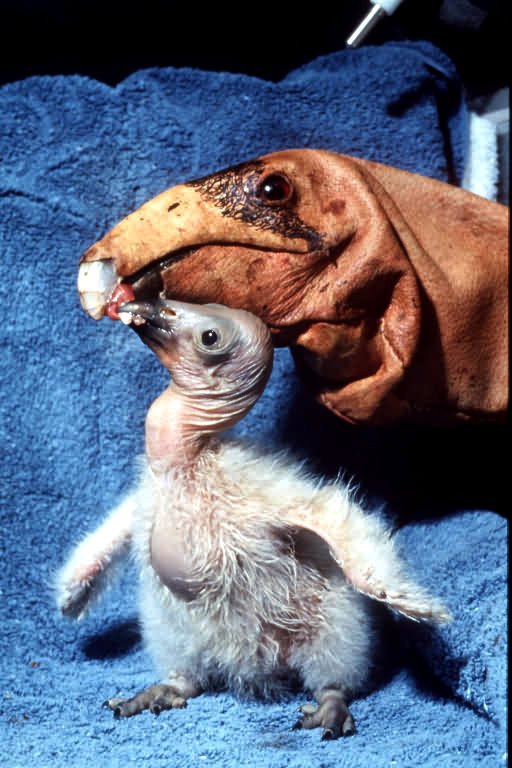Captive Breeding
Many people think that zoological parks and aquariums are exclusively for the public to view exotic animals. However, they actually provide breeding and research centers crucial to species survival. The Association of Zoos and Aquariums (AZA) is an organization dedicated to wildlife conservation, mainly through captive breeding and reintroduction programs. (44)
Species Survival Plans SSPs are programs set up by the AZA that oversee the captive breeding, habitat protection, and reintroduction programs of a species of animal. Many animals that have a species survival plan are threatened with extinction. Zoos and aquariums accredited by the AZA currently hold over 300 SSPs for many endangered species. (44)  |  The Przewalskii's Wild Horse (Equus ferus ssp. przewalskii) is the last true wild horse. It went extinct in the wilds of Mongolia in the 1960s, but it survived in captive breeding centers around the world. Captive breeding has restored small populations back to the wild and as of 2008, 325 reintroduced individuals are back in the wild. (45) |
Studbooks
To keep a species gene pool diverse in captivity, individuals are transferred between zoos to breed. The Association of Zoos and Aquariums manages species studbooks, which are records that document the demographics of a captive population and account for every individual.
They keep track of all deaths, births, and transfers of ex-situ populations to make breeding decisions that will help increase genetic diversity.
The studbooks also determine the best plan to action to preserve a species in the wild by reintroduction. (44)
California's Conservation Success Story The California Condor (Gymnogyps californianus) would not exist today if it weren't for captive breeding. In 1982 the last 22 birds in the wild were captured and placed in captive breeding facilities. Within 20 years, the population greatly increased to 200 birds due to ingenious methods of ex-situ conservation. Eggs were taken out of condor nests to encourage the mother to lay more, in a process called double clutching. Eggs were hatched in incubators and hatchlings were raised by hand. Puppets designed to look like an adult condor were used in feeding the chicks (right). Reintroduction has led to a recovery of the wild condor population and now there are over 350 individuals. However, the species' habitat must be protected if the population is to continue to recover. (47) |  |
Reintroduction
Reintroducing animals into the wild is a great but risky way to restore wild populations. Captive-bred animals usually have difficulty in adjusting to "fending for themselves" out in the wild. Also the risk of disease being introduced into wild populations is very real. (48) Nonetheless, many reintroduction programs have led to the successful recovery of endangered species in the wild.
All crocodilian species (alligators and crocodiles) are threatened with extinction. The critically endangered Gharial (Gavialis gangeticus) is a close relative of the crocodile that lives in India. The World Wildlife Fund along with local biologists successfully reintroduced 131 juvenile gharials back into natural habitat along the Ganges River. The animals were captive bred at the Kukrail Gharial Rehabilitation Center in Lucknow. The area selected for the reintroduction is a pristine habitat that has historically harbored gharials in the past. Scientists are tracking the movements of the released animals to make sure they are adapting well to their surroundings. Scientists hope that in the very near future, the released gharials will establish a resident breeding population that can help ensure the survival of this amazing species. (53) |
